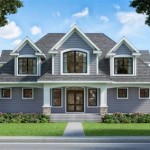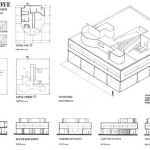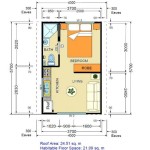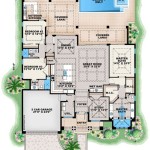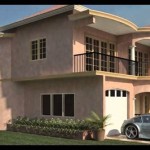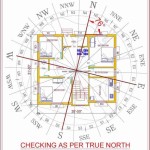```html
Haunted Houses Floor Plans: Unveiling Architectural Ghosts
The intrigue surrounding haunted houses often extends beyond mere ghost stories. Many enthusiasts are captivated by the architectural framework that provides a setting for paranormal activity. Examining the floor plans of purported haunted locations offers a unique perspective into the potential reasons and patterns behind these eerie phenomena. Floor plans, when analyzed in conjunction with historical records and anecdotal evidence, can illuminate the spatial relationships and potential energy hotspots within a haunted structure.
Analyzing a haunted house floor plan is more than just sketching out rooms. It involves understanding the intended use of each space, the flow of movement through the building, and potential modifications made over time. These modifications can create residual energy pockets or disrupt the natural flow of the building's energy, potentially contributing to paranormal occurrences. Furthermore, the placement of doors, windows, and staircases can play a significant role in the perceived "hauntedness" of a building.
The process often begins with securing an accurate floor plan. This might involve accessing historical records, architectural blueprints, or hiring a professional to create a current layout. Once a reliable floor plan is obtained, the next step involves overlaying it with information gathered from paranormal investigations, witness accounts, and historical research. This data mapping allows researchers to identify correlations between specific locations and reported paranormal events.
Key Point 1: Identifying Trauma Points and Residual Energy
One of the primary goals of analyzing haunted house floor plans is to identify potential trauma points. These are areas within the building where significant events, such as accidents, deaths, or periods of intense emotional distress, may have occurred. These events are theorized by some to leave behind a residual energy imprint, which can manifest as paranormal phenomena. By pinpointing these trauma locations on the floor plan, researchers can gain a better understanding of the potential source of the haunting.
For instance, a seemingly innocuous corner of a room might be identified as the location where a fatal accident occurred decades ago. Over time, individuals experiencing paranormal phenomena might report feeling a sudden cold spot, hearing unexplained noises, or experiencing a sense of unease in that particular area. By correlating these reports with the historical use of the space, a clearer picture of the haunting's origins can emerge. This spatial analysis provides a tangible link between historical events and present-day paranormal activity.
Furthermore, analyzing the flow of energy through the house can reveal patterns. Certain architectural features, like narrow hallways or dead-end rooms, may act as energy bottlenecks, trapping or amplifying residual energy. In contrast, open spaces with good ventilation may dissipate energy more effectively. Understanding these energy dynamics can help explain why certain areas of a haunted house are more prone to paranormal activity than others.
Key Point 2: Examining Alterations and Renovations
Alterations and renovations can drastically alter the energetic landscape of a building. Removing walls, adding new rooms, or changing the function of a space can disrupt the established energy patterns and create new areas of sensitivity. Analyzing the floor plan of a haunted house in conjunction with its historical record of renovations can reveal how these changes may have contributed to the haunting.
For example, a wall might have been removed that previously separated a living space from a burial ground. This structural change could create a conduit for paranormal activity to enter the living area. Similarly, a new addition built over a previously undisturbed area might introduce new energetic disturbances. By meticulously documenting all alterations and renovations on the floor plan, researchers can identify potential triggers for paranormal phenomena.
The materials used in construction and renovation can also play a role. Older buildings often used materials like wood, stone, and plaster, which may absorb and retain energy more effectively than modern materials like concrete and drywall. Replacing these materials during renovations could inadvertently disrupt the energy balance of the building and lead to unexpected paranormal manifestations. Therefore, a thorough understanding of the building's construction history is essential for interpreting its floor plan in the context of a haunting.
Key Point 3: The Significance of Room Function and Placement
The function and placement of rooms within a floor plan can provide valuable clues about the nature of a haunting. Certain rooms, such as bedrooms, nurseries, or sickrooms, are often associated with heightened emotional energy due to the activities that typically occur in these spaces. If a haunting is centered around one of these rooms, it may indicate a connection to a specific individual or event that transpired there.
The placement of rooms in relation to each other can also be significant. A room located directly above a basement or cellar may be more prone to paranormal activity due to the perceived proximity to the earth and the potential for increased electromagnetic fields. Similarly, rooms with a direct view of a graveyard or other historically significant site might experience higher levels of paranormal activity due to the perceived connection to the spirit world.
Furthermore, the presence of architectural features such as fireplaces, staircases, and doorways can influence the flow of energy within a building. Fireplaces, in particular, are often associated with paranormal activity due to their connection to the earth and their ability to channel energy. Staircases, as transitional spaces, can also act as gateways for spirits to move between different levels of the building. Analyzing the placement of these features on the floor plan can provide valuable insights into the potential pathways and patterns of paranormal activity.
Analyzing the floor plan also involves considering the psychological impact of the layout on the inhabitants. A house with a confusing or disorienting layout might induce feelings of anxiety or unease, which could be misinterpreted as paranormal activity. Similarly, a house with poor lighting or ventilation might create a sense of oppression or dread, contributing to the perception of a haunting. Understanding the psychological effects of the building's design is crucial for distinguishing between genuine paranormal phenomena and subjective experiences.
Moreover, the floor plan can reveal hidden spaces or concealed rooms that may have been used for illicit activities in the past. These secret areas often become focal points for paranormal activity due to the clandestine nature of the events that transpired there. Identifying these hidden spaces on the floor plan can provide valuable context for understanding the origins of the haunting.
In conclusion, floor plans of haunted houses serve as a valuable tool for understanding the spatial dynamics of paranormal activity. By combining architectural analysis with historical research and anecdotal evidence, investigators can gain a deeper appreciation for the potential reasons and patterns underlying these eerie phenomena. The meticulous examination of room function, placement, alterations, and trauma points on a floor plan offers a tangible framework for unraveling the mysteries of haunted locations.
```
Floor Plan And Home Designs For Horror Houseplans Blog Com

Haunted House Layout

Haunted Mansion Floor Plan 1st Story By Nanakifreak13 On Deviantart

Granny S Mansion Garage Haunt Layout For 2024

9 Haunted House Plans Ideas Maze Haunting

Haunted House Design Pictures From Victorian Styles 1873

Haunted Mansion Floorplan

Turning Your Library Into A Haunted House Alsc Blog

Haunted House Floor Plan

Mansion Furniture Tokens 2 Minute Tabletop

